

My Products


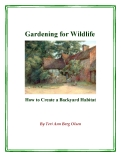
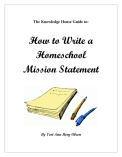

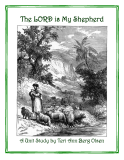
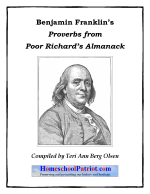
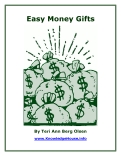

My Affiliates




~ April 2010 ~
Dear Readers,
April Fool! This is a fun, light-hearted holiday on which people enjoy playing silly tricks and practical jokes on each other. It harkens back to the medieval court jesters whose job it was to make people laugh by saying funny things and performing crazy antics like modern clowns do in the circus.
On a more serious note, the Bible contains many references to fools – and in this case it’s no laughing matter. There are about ten different Hebrew and Greek words that can be translated as “fool” in the Bible. These words have such meanings as “empty,” “thickheaded,” and “headless.”
While it’s not right to call someone a fool out of anger, just as any other form of hateful name-calling is wrong, when God calls someone a fool, you can rest assured that the person really is one. The atheist (Ps. 14:1), the slanderer (Prov. 10:18), those who despise instruction (Prov. 15:5), a contentious person (Prov. 18:6), one who lives for pleasure (Luke 12:13-20), one who trusts his own heart (Prov. 28:26), one who build his house on sand (Matt. 7: 26, 24-27) are all called fools by God.
The Book of Proverbs gives several reasons why we need to discern between those who are fools and those who are wise. The general idea is that one should not associate with fools, lest you also become like them. But be careful not to be misled, because the way of a fool is right in his own eyes, professing to be wise when he’s really not.
What is your status in God’s sight? Would He say you are a wise person or a foolish one? Let us always seek after true wisdom and avoid being fools. ;)
Learn more about April Fool's Day and fools here: http://www.knowledgehouse.info/njfkaprilfool.html.

Featured Article
Happy Spring... Easter... Resurrection Day!Easter is about much more than springtime, bunnies, baby chicks, eggs, and pastel colors. The Easter season is the pivotal point of Christianity, commemorating the resurrection of Jesus Christ and celebrating the hope of eternal life.
Easter was originally a pagan festival celebrating the return of spring and commemorating the goddess of springtime, Eastre. Early Christian holy days coincided with celebrations that already existed. Thus, Easter also celebrates new life by the fact that the Savior lives.
Some Christians prefer to call the holiday "Resurrection Day" rather than continuing to refer to the name of the pagan goddess. In many other countries Easter is called "Pascha", which comes from the Hebrew word "Pesach" meaning Passover, because Jesus is God’s Passover lamb. Easter reminds us that Christ died for our sins so that anyone who believes in Him will live forever with God in Heaven.
Just imagine, if Jerusalem had had its own daily newspaper two thousand years ago, Jesus’ resurrection surely would have been headline news! After Jesus was crucified on Good Friday, He rose from the dead on Easter Sunday. The townspeople were probably filled with wonder – and perhaps fear - as rumors and speculation must have abounded. The tomb was empty, His body was missing, and there were reports that Jesus had been seen alive!
Many contemporary scholars agree that the resurrection of Jesus Christ was probably the most thoroughly attested event in ancient history. While there were no witnesses at the tomb who actually viewed the resurrection, Jesus was seen by all of the apostles as well as by more than 500 people afterwards.
Easter was celebrated on different days of the week including Friday, Saturday, and Sunday prior to A.D. 325. In that year, the Roman Emperor Constantine issued a decree stating that Easter would be celebrated on the first Sunday that occurs after the first full moon on or after the first day of Spring. Ever since then, most Christians have observed Easter according to that rule. Consequently, Easter can fall on any Sunday between March 22 and April 25.
Click here for more Easter facts, an Easter poem, Easter recipes and activities.
Book of the Month

April is National Garden Month and Earth Day, and it's a great time for getting outdoors and studying nature. This Spring why not create a wildlife habitat for birds, butterflies, and other creatures in your yard! My “Gardening for Wildlife” e-book will walk you through the process of creating a wildlife-friendly yard and garden. This illustrated step by step guide includes: how to get started, planning checklist, required habitat elements, plant recommendations, maintenance methods, helpful habitat hints, scripture references, educational benefits, how to certify your habitat, additional resources. Makes a great family activity, homeschool project, and year-round unit study! 28 pages ~ only $4.95! Click here.
Famous Homeschoolers
This biography is a follow-up to the one on Daniel Boone last month. While Kit Carson wasn't exactly homeschooled, he never went to school and yet he mastered several languages through a combination of tutoring and immersion. You may have heard about Kit Carson in a negative light from politically-correct sources, but read the whole story of his life and you will come to know him as a man of courage and integrity, who did the best he could under difficult circumstances. Read more at: http://www.famoushomeschoolers.net/bio_carson.html. (Each month I will highlight another famous homeschooler.)
Reading Between the Lines
In 1834, 19-year-old Richard Henry Dana, Jr. went from being a Harvard student to a common sailor. This book is a detailed autobiographical account of his two-year trip, sailing from Boston to California around Cape Horn and back again. Dana didn’t go on this voyage because he was passionate for life on the sea, but as a result of doctor’s orders since prolonged study at Harvard had damaged his eyes.
However, this was no pleasure cruise and Dana had no idea what hardships lie ahead of him. Nevertheless, he was able to successfully adapt from studious landlubber to able-bodied seaman. Also to his credit, despite his education and class - which in most cases would have put him far over the master of the ship - Dana never considered himself above his mates or his duty. He later became a lawyer and spent the rest of his career defending seamen pro-bono in court, and was instrumental in getting the first laws passed giving sailors legal rights and protections.
This book has two distinct appeals – number one, it is a compelling account of life aboard a 19th-century sailing ship. It was the first lengthy account of a sea voyage ever published by a sailor, making it a classic in maritime history - one that even influenced Herman Melville. If you like books and movies such as Treasure Island, The Sea Wolf, The Old Man And The Sea, Horatio Hornblower, and Master and Commander, you will like Two Years Before the Mast.
The author uses a lot of nautical terminology: furling, reefing, climbing riggings, standing on yardarms, and all the duties a sailor had. Some editions of the book include a diagram of a sailing ship with all of the rigging described. If you’re not familiar with sailing jargon, this will be an important feature, as the names of the various parts of a ship are constantly referred to in the text. But regardless of how much you know about sailing, the image of clinging to life ropes 100 feet above deck during a blizzard at Cape Horn is hard to beat for an exciting story!
Secondly, this book is a fascinating historical account of 19th-century California before it became a state, when the entire West was Spanish. In fact, it’s the only account of Mexican California written by an American. Thus, much of American history can be learned from this book, including a lot about the social and economic conditions in the U.S., in Mexico, and on the high seas at that time, including a detailed description of the little-known cow hide trade in the days of the California missions.
The author’s stops along the coast at early San Diego, San Juan Capistrano, San Pedro, Santa Barbara, Monterey, and San Francisco provide remarkable insight into the settlements and inhabitants of early California. Many of the landmarks that Dana described still exist, although their surroundings are quite different. For example, when he first visited San Francisco, it had one building. After the Gold Rush, when Dana returned to San Francisco in 1856, it was a city of over 100,000!
A replica of Dana’s first ship, “The Pilgrim,” is harbored at Dana Point, well worth visiting. The city was named after the headland of Dana Point, which in turn was named for Richard Henry Dana, Jr., author of Two Years Before the Mast, in which he wrote about the area. At that time it was known as Capistrano Bay, and Dana called it “the most romantic spot on the California coast.” Dana Point is approximately one-half way between Los Angeles and San Diego, bordered by the cities of Laguna Niguel and Laguna Beach to the north, San Juan Capistrano to the east, and San Clemente to the south.
Since Dana wrote his journal in the 1830’s, it is refreshingly politically incorrect without being racist. This book was listed by National Geographic as one of the “100 best adventure books” ever written. It’s a vivid account of the relationship between man and sea, a timeless portrayal of human endurance, and an informative historical work all in one. Recommended for teens and adults ages 13 and up.
Learn more about Kit Carson and Richard Henry Dana!
These two men's adventures make for a fascinating comparison! Richard Henry Dana's autobiographical account describes the Mexican California of the 1830's from the perspective of traveling up the Pacific coast, while Kit Carson's biography describes the Mexican California of the 1830's from the perspective of traveling over land. Both are recommended for ages 13 and up.
Two Years Before the Mast Study Guide (Download this free 28-page Teacher's Guide from Signet Classics.)
The Life of Kit Carson (Download this 132-page reprint of an 1899 book, with added illustrations. Use caution if reading aloud to younger children; I would rate this story PG for scenes of drinking, and Indian violence such as scalping. P.S. It is definitely NOT politically correct!)
Learning Links
Playing with Poetry (April is National Poetry Month.)
Thomas Jefferson (Thomas Jefferson was born on April 13, 1743.)
National Parks (April 18-25 is National Park Week.)
Dare to be Free...Don't Watch TV (April 19-25 is National Turnoff Week. And it’s not just for TVs either. The goal is to limit recreational screen time, spend more family time together, and boost physical activity. So turn off the TV, pull the power cord on your video game system, and give the computer a break!)
Kindergarten Day (Friedrich Froebel, the founder of the first kindergarten, was born on April 21, 1782.)
Freebie of the Month
Enjoy these free printables!
Resurrection Word Find
(This will keep the kids quietly occupied for a while. I gave it a try and found about 25 words myself.)
Resurrection Scripture Strips
(Cut these out and place them inside plastic eggs.)
Easter Scripture Strips
(Cut these out and place them inside plastic eggs.)
Bonus! Print out a Lost Sheep Maze from my Psalm 23 Unit Study. Buy the e-book and get more pages like this! Click here to download my Psalm 23 Unit Study.
(Requires Adobe Reader: click here for free download.)
Quote of the Month
“For God so Loved the World that he gave His only begotten Son; that whosoever believeth in Him should not perish but have everlasting life.” ~John 3:16
A Note From Teri...
It's that time of year again... trying to plant my garden, do my spring cleaning, finish completing the income taxes, and a million other things! Our youngest son's birthday is April 4 - he's turning 10 this year - and interestingly this is the first time the date has fallen on Easter Sunday. Wishing you all the joys of Spring as we celebrate Resurrection Day as a time for hope, renewal of spirit, rekindling of faith, and rejoicing in the triumph of our Lord and Savior.
Happy Homeschooling!
